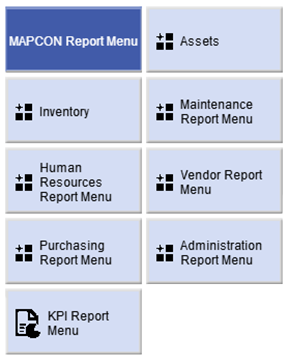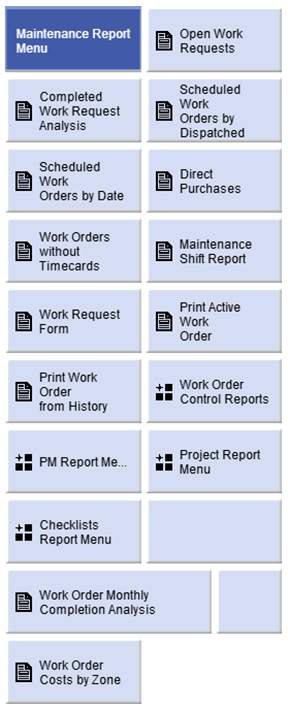Published: April 10, 2025 Updated: April 04, 2025
How to Improve Maintenance Reports with Better Data Management
 When you conduct maintenance, you need to document the jobs from the work request through the completion of the repair. You need this information to understand maintenance reports. You need as much information as possible even if you don't use all of it.
When you conduct maintenance, you need to document the jobs from the work request through the completion of the repair. You need this information to understand maintenance reports. You need as much information as possible even if you don't use all of it.
Every piece of information has its importance. The person who submitted the work request. The creation of the work order. The location and asset of the repair. What parts the technician used. The cost of those parts. The length of time for the job. Whether the job was completed or backlogged.
All these and more go into reports. These reports help you measure a maintenance program's effectiveness and identify areas for improvement.
This article will discuss the following:
- Exploring Various Types Of Maintenance Reports.
- Key Components of an Effective Maintenance Report
- Why Proper Data Management is Critical for Maintenance Reporting
- How a Computerized Maintenance Management System (CMMS) Enhances Maintenance Reports and Data Management
Exploring Various Types Of Maintenance Reports
As mentioned above, each bit of information gathered has importance to someone. Different information caters to the specific needs of different areas within a company. Let's explore some common types.
Preventive Maintenance (PM): These document routine maintenance activities performed on equipment to prevent breakdowns. They typically include details like the date of service, completed tasks, and parts used. You can break these down into various categories. Historical data within a targeted date range for PMs on a certain asset or location. PM on-time compliance by procedure or employee. Monthly summary or yearly attainments.
 Asset Management (CM): Examples of these include:
Asset Management (CM): Examples of these include:
- Top equipment fails.
- Top failures by equipment.
- Top equipment costs.
- Mean time between failures (MTBF).
- Mean time to repair (MTTR).
- Various equipment costs.
Inventory Management: These track spare parts and inventory levels. These might include reordering points, usage trends, and lead times for procurement. Examples of these types include:
Work Order: These track the progress of specific maintenance tasks assigned to technicians. They detail:
- The work order number.
- Equipment involved.
- Task description.
- Estimated and actual completion times.
- Notes or observations from the technician.
- Again, the honing of data for specific reports depends on what you need to analyze.
- Open work orders.
- Scheduled work orders by date.
- Work order costs by zone/equipment/location/cost center/etc.
Cost: Other costs to analyze include labor, downtime, and depreciation tracking.
By leveraging these diverse reports, companies gain valuable insights into the health of their equipment. They identify areas for improvement in maintenance practices. Also, they help to optimize resource allocation for future maintenance activities.
Key Components of an Effective Maintenance Report
The precise content of a maintenance report can vary depending on its type and specific needs. Common elements include:
Header Information: Title, date, department, equipment or system being reported on, and reporting technician.
Description of Work Performed: This section details the specific tasks undertaken. From whether the topic discusses a planned PM activity, corrective repair, or other maintenance intervention.
Observations and Findings: Here, the technician documents any observations made during the maintenance process. Equipment condition, potential issues identified, or recommendations for future actions.
Parts Used: A list of parts used during the maintenance activity, including part numbers, quantities, and any relevant details like manufacturer or warranty information.
Labor Hours: The time spent by technicians performing the maintenance tasks.
Photos or Attachments: Including pictures of equipment condition, damaged parts, or completed repairs can significantly enhance the report's value.
By maintaining a comprehensive and standardized approach to report content, companies enhance communication and information sharing within their maintenance teams.
Why Proper Data Management is Critical for Maintenance Reporting
To have your reports shine, you should implement certain practices.
Standardization: Establish consistent formats and procedures for data entry across all reports. This ensures clarity and facilitates easier analysis. Keeping information organized from report to report helps efficiency and a better understanding of the data.
Data Entry Accuracy: Train technicians on the importance of accurate data entry and implement data validation measures to minimize errors. Check. Double check. Triple check. Look for errors in spelling, grammar, punctuation, and of course, numbers.
Completeness: Encourage technicians to document all relevant details in the reports. Include observations, insights, and recommendations.
Timely Reporting: Promote prompt report submission to maintain accurate records and facilitate timely decision-making. A decision on something that happened six months ago doesn't bode well for efficiency. However, I'm not dismissing historical data. A record of information throughout the years—depreciation, for example—has its merits.
Data Security: Implement robust data security measures to protect sensitive information contained within any report.
By prioritizing data management, companies ensure their maintenance reports provide a reliable foundation for informed decision-making.
Discover how streamlined maintenance processes can elevate production. Learn more.
How a Computerized Maintenance Management System (CMMS) Enhances Maintenance Reports and Data Management
Many companies have transitioned away from traditional paper-based or spreadsheet systems. Instead, they've found much better value in a CMMS.
How can CMMS software enhance reports? First, it acts as a central database for all your maintenance activities. Asset management. Inventory. Preventive maintenance. Work requests/work orders. A quality system will track equipment readings and asset depreciation.
Let's look at specific ways this system helps reports.
Automated Report Generation: It automatically generates pre-defined reports based on user-specified criteria. This saves valuable time and reduces the risk of human error. Look for a system that offers plenty of report types and enough parameters or filters to hone the information.
Data Centralization: A CMMS provides a central repository for all maintenance data. No more scattered files and spreadsheets. This facilitates easy access and improves data analysis capabilities.
Real-Time Data: You have real-time access to maintenance data, enabling informed decision-making based on the latest updates.
Customization: Want a special report? Talk to the system provider for assistance. Customizing features and reports only adds value to your investment. CMMS software offers greater flexibility when customizing report formats and content.
Integration with Other Systems: Again, with assistance from the provider, your CMMS integrates with other third-party systems. Enterprise Resource Programs (ERP) and accounting. This facilitates automatic data exchange, reduces manual data entry, and ensures all systems reflect the latest maintenance information.
What else can integration accomplish?
Optimize Inventory Management: You have real-time data on parts usage from maintenance reports. This allows for better forecasting of spare parts needs, preventing stockouts and minimizing downtime.
Enhance Cost Control: CMMS software can track maintenance costs across various categories. You can better analyze cost analysis and identify areas for cost savings.
Improve Budgeting and Resource Allocation: You have accuracy on maintenance expenses and equipment performance. Managers make informed decisions regarding future maintenance budgets and resource allocation.
Predict Equipment Failure: Historical maintenance data and equipment performance trends, help you predict potential equipment failures. Subsequently, you implement better proactive maintenance to minimize downtime.
How Maintenance Reports Drive Better Asset Management
Sometimes, we feel overwhelmed by too many reports. Where do you start to analyze and collate the information?
Start by following the guidelines in the section on proper data management. The better you organize, the better the process. The better the process, the better the analysis.
By understanding maintenance reports you have a better oversight over maintenance management. By leveraging a CMMS, companies can transform reporting from a simple record-keeping exercise into a powerful tool for success.
Call 800-922-4336 for a world-class CMMS. Ask a Mapcon Technologies representative for a free demonstration of the power of reports.
MAPCON CMMS software empowers you to plan and execute PM tasks flawlessly, thanks to its wealth of features and customizable options. Want to see it for yourself? Click the button below to get your FREE 30-day trial of MAPCON!
Try It FREE!